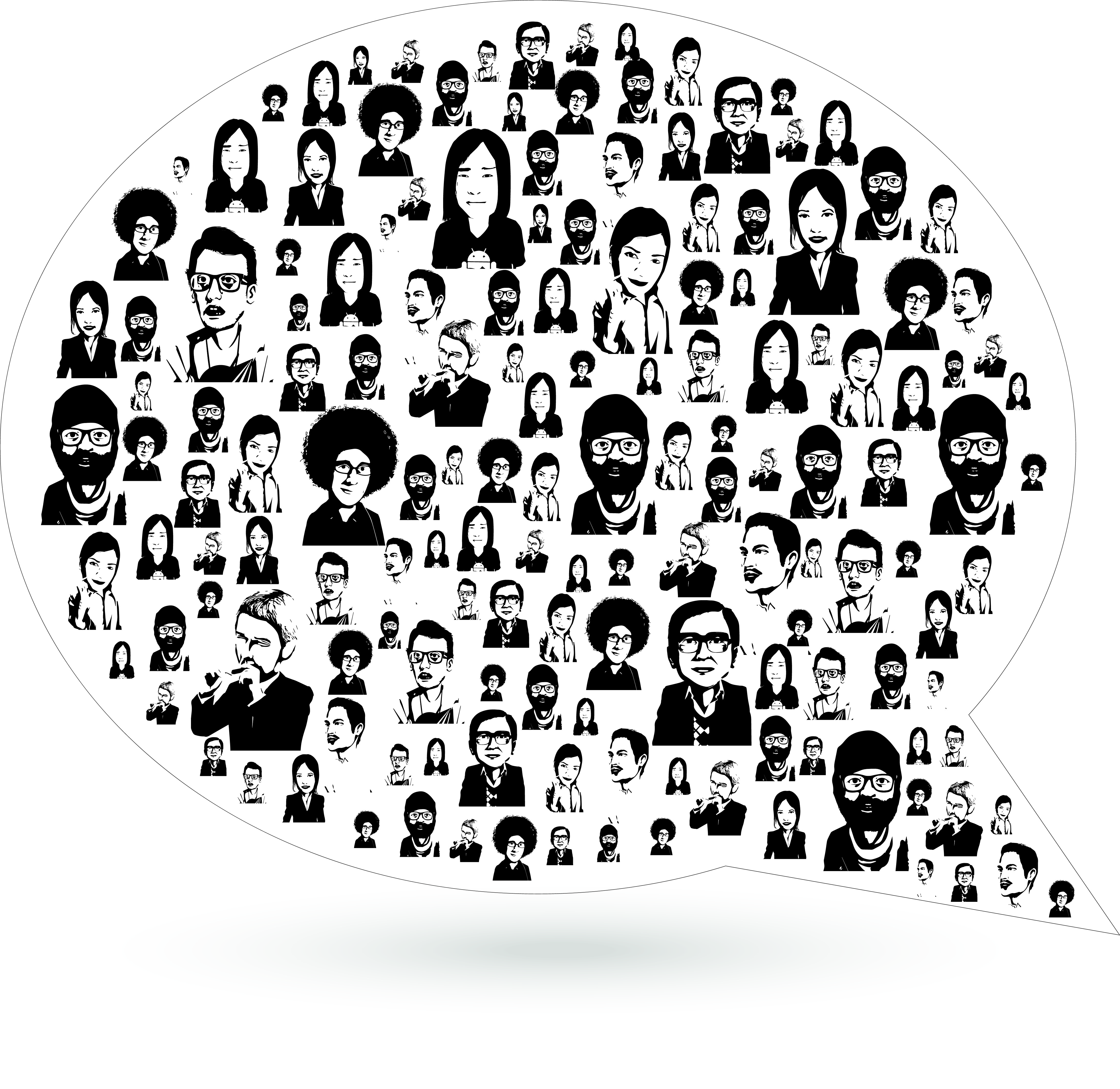|
Social Problem-solving
Social problem-solving, in its most basic form, is defined as problem solving as it occurs in the natural environment. More specifically it refers to the cognitive-behavioral process in which one works to find adaptive ways of coping with everyday situations that are considered problematic. This process in self-directed, conscious, effortful, cogent, and focused. Adaptive social problem-solving skills are known to be effective coping skills in an array of stressful situations. Social problem-solving consists of two major processes. One of these processes is known as problem orientation. Problem orientation is defined as the Schema (psychology), schemas one holds about problems in everyday life and ones assessment of their ability to solve said problems. The problem orientation may be positive and constructive to the problem solving process or negative and therefore dysfunctional in the process. Problem-solving proper is known as the second major process in social problem-solving. T ... [...More Info...] [...Related Items...] OR: [Wikipedia] [Google] [Baidu] |
Problem Solving
Problem solving is the process of achieving a goal by overcoming obstacles, a frequent part of most activities. Problems in need of solutions range from simple personal tasks (e.g. how to turn on an appliance) to complex issues in business and technical fields. The former is an example of simple problem solving (SPS) addressing one issue, whereas the latter is complex problem solving (CPS) with multiple interrelated obstacles. Another classification is into well-defined problems with specific obstacles and goals, and ill-defined problems in which the current situation is troublesome but it is not clear what kind of resolution to aim for. Similarly, one may distinguish formal or fact-based problems requiring psychometric intelligence, versus socio-emotional problems which depend on the changeable emotions of individuals or groups, such as tactful behavior, fashion, or gift choices. Solutions require sufficient resources and knowledge to attain the goal. Professionals such as ... [...More Info...] [...Related Items...] OR: [Wikipedia] [Google] [Baidu] |
Schema (psychology)
In psychology and cognitive science, a schema (plural ''schemata'' or ''schemas'') describes a pattern of thought or behavior that organizes categories of information and the relationships among them. It can also be described as a mental structure of preconceived ideas, a framework representing some aspect of the world, or a system of organizing and perceiving new information, such as a mental schema or conceptual model. Schemata influence attention and the absorption of new knowledge: people are more likely to notice things that fit into their schema, while re-interpreting contradictions to the schema as exceptions or distorting them to fit. Schemata have a tendency to remain unchanged, even in the face of contradictory information. Schemata can help in understanding the world and the rapidly changing environment. People can organize new perceptions into schemata quickly as most situations do not require complex thought when using schema, since automatic thought is all that is r ... [...More Info...] [...Related Items...] OR: [Wikipedia] [Google] [Baidu] |
Procrastination
Procrastination is the action of unnecessarily and voluntarily delaying or postponing something despite knowing that there will be negative consequences for doing so. The word has originated from the Latin word ''procrastinatus'', which itself evolved from the prefix ''pro-'', meaning "forward," and ''crastinus'', meaning "of tomorrow." Oftentimes, it is a habitual human behaviour. It is a common human experience involving delay in everyday chores or even putting off salient tasks such as attending an appointment, submitting a job report or academic assignment, or broaching a stressful issue with a partner. Although typically perceived as a negative trait due to its hindering effect on one's productivity often associated with depression, low self-esteem, guilt and inadequacy, it can also be considered a wise response to certain demands that could present risky or negative outcomes or require waiting for new information to arrive. From a cultural and a social perspective, studen ... [...More Info...] [...Related Items...] OR: [Wikipedia] [Google] [Baidu] |
Self-harm
Self-harm is intentional behavior that is considered harmful to oneself. This is most commonly regarded as direct injury of one's own skin tissues usually without a suicidal intention. Other terms such as cutting, self-injury and self-mutilation have been used for any self-harming behavior regardless of suicidal intent. It is not the same as masochism, as no sexual or nonsexual pleasure is obtained. The most common form of self-harm is using a sharp object to cut the skin. Other forms include scratching, hitting, or burning body parts. While earlier usage included interfering with wound healing, excessive skin-picking, hair-pulling, and the ingestion of toxins, current usage distinguishes these behaviors from self-harm. Likewise, tissue damage from drug abuse or eating disorders is not considered self-harm because it is ordinarily an unintended side-effect but context may be needed as intent for such acts varies. Although self-harm is by definition non-suicidal, it may still b ... [...More Info...] [...Related Items...] OR: [Wikipedia] [Google] [Baidu] |
Personality Disorders
Personality disorders (PD) are a class of mental disorders characterized by enduring maladaptive patterns of behavior, cognition, and inner experience, exhibited across many contexts and deviating from those accepted by the individual's culture. These patterns develop early, are inflexible, and are associated with significant distress or disability. The definitions vary by source and remain a matter of controversy. Official criteria for diagnosing personality disorders are listed in the sixth chapter of the ''International Classification of Diseases'' (ICD) and in the American Psychiatric Association's ''Diagnostic and Statistical Manual of Mental Disorders'' (DSM). Personality, defined psychologically, is the set of enduring behavioral and mental traits that distinguish individual humans. Hence, personality disorders are defined by experiences and behaviors that deviate from social norms and expectations. Those diagnosed with a personality disorder may experience difficulties i ... [...More Info...] [...Related Items...] OR: [Wikipedia] [Google] [Baidu] |
Schizophrenia
Schizophrenia is a mental disorder characterized by continuous or relapsing episodes of psychosis. Major symptoms include hallucinations (typically hearing voices), delusions, and disorganized thinking. Other symptoms include social withdrawal, decreased emotional expression, and apathy. Symptoms typically develop gradually, begin during young adulthood, and in many cases never become resolved. There is no objective diagnostic test; diagnosis is based on observed behavior, a history that includes the person's reported experiences, and reports of others familiar with the person. To be diagnosed with schizophrenia, symptoms and functional impairment need to be present for six months (DSM-5) or one month (ICD-11). Many people with schizophrenia have other mental disorders, especially substance use disorders, depressive disorders, anxiety disorders, and obsessive–compulsive disorder. About 0.3% to 0.7% of people are diagnosed with schizophrenia during their lifetime. In 2 ... [...More Info...] [...Related Items...] OR: [Wikipedia] [Google] [Baidu] |
Autism
The autism spectrum, often referred to as just autism or in the context of a professional diagnosis autism spectrum disorder (ASD) or autism spectrum condition (ASC), is a neurodevelopmental condition (or conditions) characterized by difficulties in social interaction, verbal and nonverbal communication, and the presence of repetitive behavior and restricted interests. Other common signs include unusual responses to sensory stimuli. Autism is generally understood as a ''spectrum disorder'', which means that it can manifest differently in each person: any given autistic individual is likely to show some, but not all, of the characteristics associated with it, and the person may exhibit them to varying degrees. Some autistic people remain nonspeaking over the course of their lifespan, while others have relatively unimpaired spoken language. There is large variation in the level of support people require, and the same person may present differently at varying times. Historically ... [...More Info...] [...Related Items...] OR: [Wikipedia] [Google] [Baidu] |
Crowdsourcing
Crowdsourcing involves a large group of dispersed participants contributing or producing goods or services—including ideas, votes, micro-tasks, and finances—for payment or as volunteers. Contemporary crowdsourcing often involves digital platforms to attract and divide work between participants to achieve a cumulative result. Crowdsourcing is not limited to online activity, however, and there are various historical examples of crowdsourcing. The word crowdsourcing is a portmanteau of "crowd" and " outsourcing". In contrast to outsourcing, crowdsourcing usually involves less specific and more public groups of participants. Advantages of using crowdsourcing include lowered costs, improved speed, improved quality, increased flexibility, and/or increased scalability of the work, as well as promoting diversity. Crowdsourcing methods include competitions, virtual labor markets, open online collaboration and data donation. Some forms of crowdsourcing, such as in "idea competiti ... [...More Info...] [...Related Items...] OR: [Wikipedia] [Google] [Baidu] |
Collaboration
Collaboration (from Latin ''com-'' "with" + ''laborare'' "to labor", "to work") is the process of two or more people, entities or organizations working together to complete a task or achieve a goal. Collaboration is similar to cooperation. Most collaboration requires leadership, although the form of leadership can be social within a decentralized and egalitarian group.Spence, Muneera U. ''"Graphic Design: Collaborative Processes = Understanding Self and Others."'' (lecture) Art 325: Collaborative Processes. Fairbanks Hall, Oregon State University, Corvallis, Oregon. 13 April 2006See also. Teams that work collaboratively often access greater resources, recognition and rewards when facing competition for finite resources. Caroline S. Wagner and Loet Leydesdorff. Globalisation in the network of science in 2005: The diffusion of international collaboration and the formation of a core group.'' Structured methods of collaboration encourage introspection of behavior and communication. ... [...More Info...] [...Related Items...] OR: [Wikipedia] [Google] [Baidu] |
Social Information Processing
Social information processing is "an activity through which collective human actions organize knowledge." It is the creation and processing of information by a group of people. As an academic field Social Information Processing studies the information processing power of networked social systems. Typically computer tools are used such as: * Authoring tools: e.g., blogs * Collaboration tools: e.g., wikis, in particular, e.g., Wikipedia * Translating tools: Duolingo, reCAPTCHA * Tagging systems (social bookmarking): e.g., del.icio.us, Flickr, CiteULike * Social networking: e.g., Facebook, MySpace, Essembly * Collaborative filtering: e.g., Digg, the Amazon Product Recommendation System, Yahoo! Answers, Urtak Although computers are often used to facilitate networking and collaboration, they are not required. For example the ''Trictionary'' in 1982 was entirely paper and pen based, relying on neighborhood social networks and libraries. The creation of the ''Oxford English Diction ... [...More Info...] [...Related Items...] OR: [Wikipedia] [Google] [Baidu] |
Human-based Computation
Human-based computation (HBC), human-assisted computation, ubiquitous human computing or distributed thinking (by analogy to distributed computing) is a computer science technique in which a machine performs its function by outsourcing certain steps to humans, usually as microwork. This approach uses differences in abilities and alternative costs between humans and computer agents to achieve symbiotic human–computer interaction. For computationally difficult tasks such as image recognition, human-based computation plays a central role in training Deep Learning-based Artificial Intelligence systems. In this case, human-based computation has been referred to as human-aided artificial intelligence. In traditional computation, a human employs a computer to solve a problem; a human provides a formalized problem description and an algorithm to a computer, and receives a solution to interpret. Human-based computation frequently reverses the roles; the computer asks a person or a large ... [...More Info...] [...Related Items...] OR: [Wikipedia] [Google] [Baidu] |




